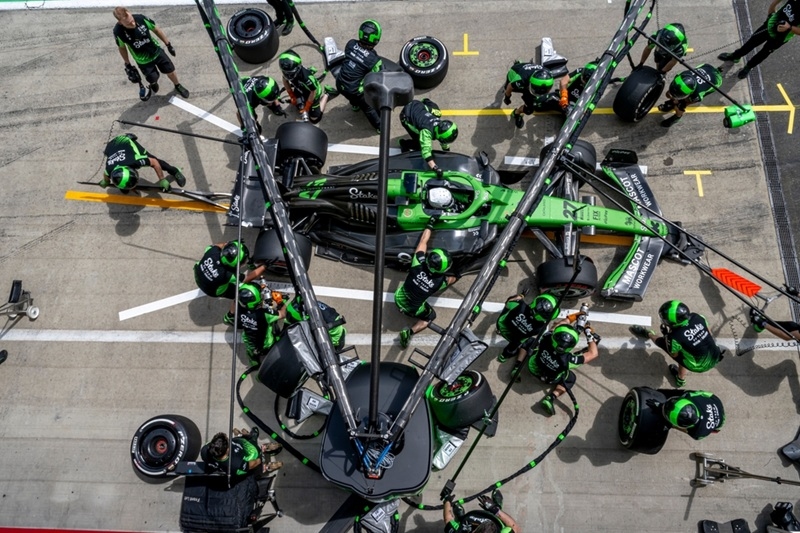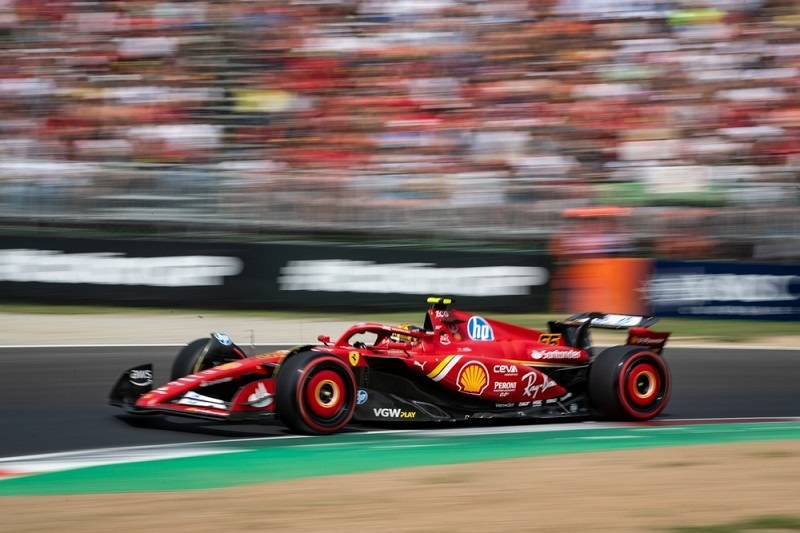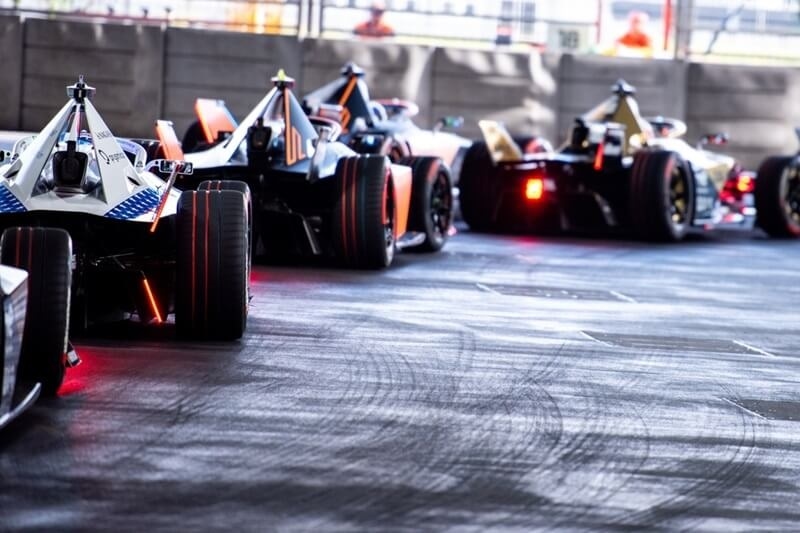Engineering Rivalries: F1 vs. NASCAR Performance Showdown

Image Source: YouTube
Formula 1 and NASCAR stand as titans in the world of motorsport, each with a storied history and a dedicated fan base that spans the globe. While Formula 1 is renowned for its high speed, technologically advanced machinery, and international flair, NASCAR is celebrated for its heart-pounding stock car races deeply rooted in American tradition.
Let us now explore the engineering differences and performance metrics in our comparison of F1 Cars vs NASCAR Cars.
Historical Background and Evolution
Formula 1: A Legacy of Innovation
Originating from the European Grand Prix motor racing of the early 20th century, Formula 1 has evolved into a global spectacle. The series is known for pushing the boundaries of automotive technology, with teams investing heavily in research and development to gain a competitive edge. Formula 1s commitment to innovation is evident in its adoption of hybrid engines and advanced aerodynamics, making it a pinnacle of motorsport technology.
NASCAR: American Racing Heritage
NASCARs origins can be traced back to the prohibition-era bootleggers who modified their vehicles to outrun the police, eventually leading to the formalization of stock car racing in 1948. Unlike Formula 1, NASCAR has maintained a closer connection to commercially available vehicles, making the sport uniquely accessible and relatable to its predominantly American audience. The series emphasizes durability and raw power, with race formats that enhance the spectacle of side-by-side racing.
The Cars: Design and Technology
Design Distinctions Between F1 and NASCAR

Image Source: Oversteer 48
Formula 1 cars are the epitome of high-tech motorsport engineering. Designed for maximum speed and agility, these single-seater vehicles boast incredibly sophisticated technologies such as energy recovery systems and electronic control units that manage their hybrid engines. In stark contrast, NASCAR vehicles are based on a stock car model which, although heavily modified, remains more relatable to the average car seen on American highways.
Technological Advancements and Regulations
The technological landscape of Formula 1 includes constant innovation driven by a stringent set of regulations that encourage sustainability and efficiency. NASCAR, while less focused on cutting-edge technology, prioritizes safety and competitive parity, with rules that ensure close racing conditions and more frequent lead changes.
Engines and Power Units
Comparative Analysis of Engine Performance
In Formula 1, the 1.6 liter turbocharged V6 hybrid engines represent a marvel of engineering, designed to optimize power output and fuel efficiency. These engines are complemented by systems like the MGU-K and MGU-H, which recover energy to provide additional power. Conversely, NASCARs 5.8-liter V8 engines focus on durability and sustained performance over long distances, embodying a philosophy that values endurance over the intricacies of hybrid technology.
Hybrid Technology in Motorsport
The adoption of hybrid technology in Formula 1 reflects the series' commitment to innovation and environmental responsibility, a contrast to NASCARs traditional approach which eschews such complexities in favor of a more straightforward, raw power output.
Speed and Aerodynamics

Image Source: Knotts Moto Sports Hub
Top Speeds and Influencing Factors
Formula 1 cars are designed to excel in speed and maneuverability, with top speeds that can exceed 360 km/h (223 mph) during qualifying sessions. NASCAR vehicles, while not as fast, still achieve impressive speeds up to 200 mph, optimized for the oval tracks that are a staple of the series.
The Role of Aerodynamics
Aerodynamics plays a crucial role in Formula 1, where the design of the car is heavily reliant on reducing drag and maximizing downforce to achieve greater speeds and quicker lap times. NASCAR cars, on the other hand, are built to withstand the rigors of close, bumper-to-bumper racing, where stability and durability take precedence over aerodynamic efficiency. This contrast in aerodynamic priorities between the two sports provides an interesting strategy layer for those participating in F1 fantasy leagues, where using F1 fantasy chips effectively can make a significant difference.
Racing Formats and Strategies
Differences in Race Formats
Formula 1 and NASCAR offer distinctly different racing experiences, shaped by their unique formats. Formula 1 features fewer races, with a schedule that spans globally renowned circuits. Each event typically consists of a practice session, qualifying, and the race, including occasional sprint races that add to the competitive excitement.
In contrast, NASCAR hosts a larger number of races primarily on oval tracks across the United States, incorporating stage racing that divides races into segments, offering points and strategic opportunities at each stage.
Influence on Car Design and Race Strategy
These format differences significantly influence both car design and strategic planning. Formula 1 cars are built for a combination of speed and agility suited to a variety of tracks, from tight street circuits to fast, flowing road courses. NASCAR vehicles are designed with durability in mind to withstand closer and more frequent racing contact.
Strategically, F1 teams focus on aerodynamics and energy-efficient performance, while NASCAR teams often strategize around pit stops and track positions to exploit the stage racing format.
Qualifying Systems
Comparison of Qualifying Systems
Formula 1 utilizes a three-part elimination qualifying system that determines the starting grid through timed sessions, where the slowest drivers are progressively eliminated. This system places a premium on timing and strategic use of tires.
NASCAR's qualifying varies significantly by track type, with single-car qualifying runs used at most tracks and group qualifying at others, reflecting the diverse conditions and strategies required across its racing calendar. Understanding the nuances of these qualifying systems can also shed light on the crucial role of F1 pre-season testing in preparing teams for the competitive challenges of timed eliminations.
Economic Aspects
Team Budgets and Financial Regulations
Economically, the sports differ markedly. Formula 1 has implemented a budget cap to ensure competitive parity and sustainability, limiting team spending on car development and operations. NASCAR, traditionally having lower operational costs, does not employ a budget cap, but the economic scale and sponsor dependencies significantly influence team capabilities and performance levels.
Impact of Financial Resources
Financial resources in both series directly impact the level of technological advancements and competitive performance. In Formula 1, the budget cap aims to level the playing field, although wealthier teams can still afford better resources and development. In NASCAR, the ability to attract high-level sponsorship can dictate the quality of car preparation and the expertise of the crew.
Cultural Impact and Popularity
Appeal and Cultural Significance
Formula 1's global presence brings a sophisticated, international appeal, attracting a diverse audience with its technological prowess and glamorous locations. NASCARs appeal is deeply embedded in American culture, promoting a family-friendly, patriotic atmosphere that celebrates close, competitive racing. Both series benefit from strong driver personalities and extensive media coverage, which enhance their popularity and fan engagement.
You may also like: Making F1 Successful In Asia: Challenges & Solutions
Safety Measures
Both series have made significant strides in safety. Formula 1 has introduced advancements like the Halo protection system, while NASCAR has continuously evolved its car safety features and track safety measures following high-profile incidents.
FAQs
1. What's the Difference in Race Duration in Formula One vs. NASCAR?
Formula One races are typically shorter, averaging around 90 minutes per race. NASCAR events are lengthier, often extending several hours with races ranging from 300 to 500 miles.
2. How Are Champions Determined in Formula One and NASCAR?
In Formula One, the championship is decided through a points system, where points are allocated based on race results throughout the season. The driver with the most points at season's end is declared the champion. NASCAR uses a playoff system where the top drivers compete across several races at the season's end to crown a champion.
3. Who Watches Formula One and NASCAR?
Formula One appeals to a global, upscale audience interested in the technical and design aspects of racing. NASCAR fans are typically American, with a preference for rugged, competitive racing involving American brands.
4. Is Driving an F1 Car More Challenging Than Driving a NASCAR?
Driving an F1 car can be more complex due to its extreme speeds and sophisticated technology, making it a test of precision and endurance. However, NASCAR presents its own challenges, including more aggressive racing and frequent contact between cars, requiring drivers to master durability and crash avoidance.
This content was created by AI




